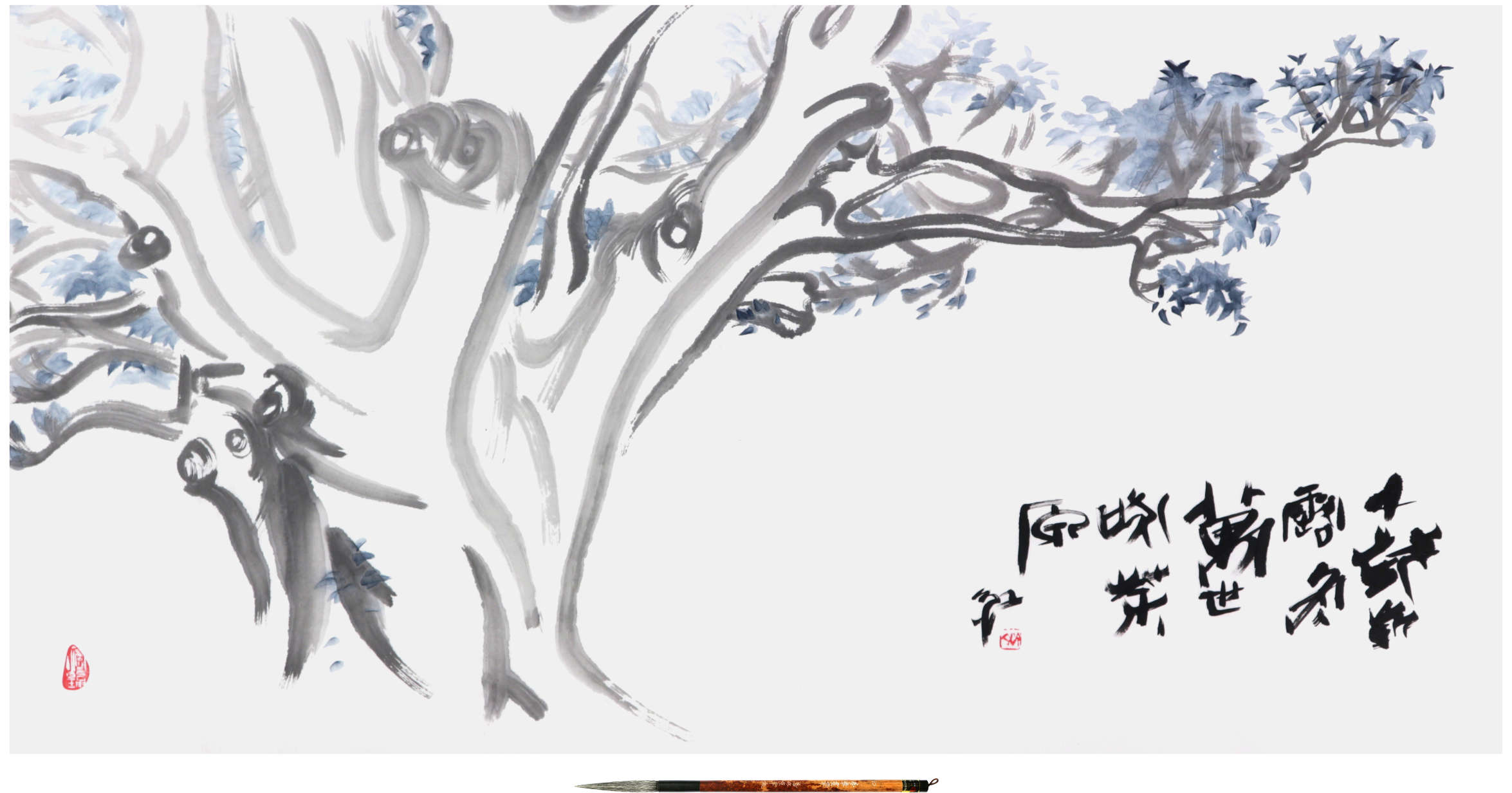 |
The Example of Sai Koh (Qi Hong)’s Freehand Brushwork
Traditional Chinese Painting and Calligraphy on Tea:
|
| View 3 |
“Initiation of Fingerprint-style Transformation of Freehand Brushwork” in Traditional Chinese Painting and Calligraphy Art: “Integration of the Author's Individual Intention and Expression into the Painting and Calligraphy Works” |
|
Without
the coexistence of generality and diversity, there will be no
existence of tradition and innovation. How to recognize and
inherit general excellence? How to explore and amplify diverse
personal preferences? These can be said to be the keys to
innovation. The creation of traditional Chinese painting and calligraphy can be said to be the "initiation" process of expressing the individual aesthetic pursuit, that is, "to integrate the author's individual intention and expression into the painting and calligraphy works" through the author’s "borrowing forms to create freehand works". During this process, the unprecedented "originality" created by the literary conception and the fingerprint-style transformation of writing brush and ink is the basic presentation of the painting and calligraphy creation of literary art. Traditional Chinese painting and calligraphy has both the practicality of record reproduction and the artistry of aesthetic pursuit. It is a flat static language for visual communication between the author and the viewer through the work. The interoperability of vision and culture, which is necessary for language, determines that the space of personality that can be used by the "initiation" is not arbitrary but must abide by the bottom line of traditional Chinese culture, especially the common reasonable beauty felt by human vision. |
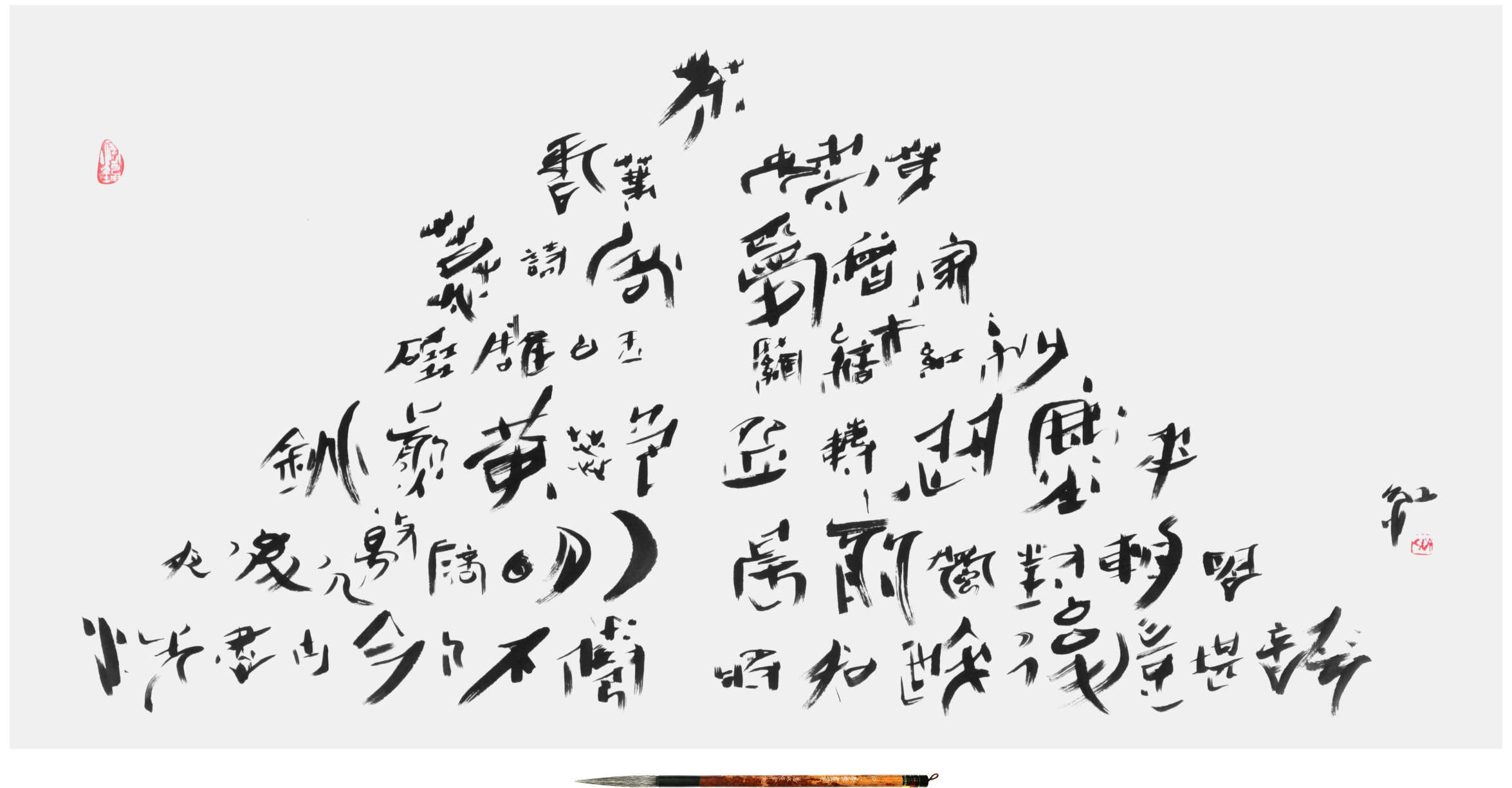 |
The Example of Sai Koh (Qi Hong)’s Freehand Brushwork
Traditional Chinese Painting and Calligraphy on Tea:
|
The Creative Purpose of “Conception Procedes Skill” - “Conception Embodying Positive Energy Beauty” in terms of “Expressiveness in Freehand Brushwork”Traditional Chinese painting and calligraphy are not self-entertaining diaries that ignore the viewer's feelings nor reproduction records that ignore aesthetic pursuits nor decorative arts and crafts that only focus on skill beauty; their creation purpose is to arouse the viewers' spiritual fluctuation and resonance on the "positive energy beauty" that reflects the author's personal thoughts and emotional pursuits through the painting and calligraphy. Compared with other art forms, the unique literary Chinese character "conception" of traditional Chinese painting and calligraphy occupies the foremost "targeted" position as the decisive pin-pointing part to express clearly how to achieve the creation purpose of "positive energy beauty". As a literary art, the basic aesthetic pursuit of traditional Chinese painting and calligraphy can be said to be “expressiveness in freehand brushwork” with the social commonality of traditional Chinese culture that features “people-orientedness”, “positive energy beauty” and “integration of the author's individual intention and expression into the painting and calligraphy works”. The vividness of skill -"Ji", is a purposeful freehand brushwork - the existence of "Yi" (literally means conception) reflects its true value. If "Ji" is taken as an example of "archery", its "meaning" can be "protecting the family and defending the country", "hunting for a living", "acrobatics" and "looting". It is obvious that the same word "Ji" can be meaningful. The "worldly masters" who needn’t exhibit artworks do not need to create painting and calligraphy works; the painting and calligraphy creations shown to others are purposeful; for the painting and calligraphy creation, purpose is prior to skill, and purposeless painting and calligraphy creation that only focuses on skill beauty can be said to be "decorative graphic arts and crafts" or even "targetless" blind behavior. |
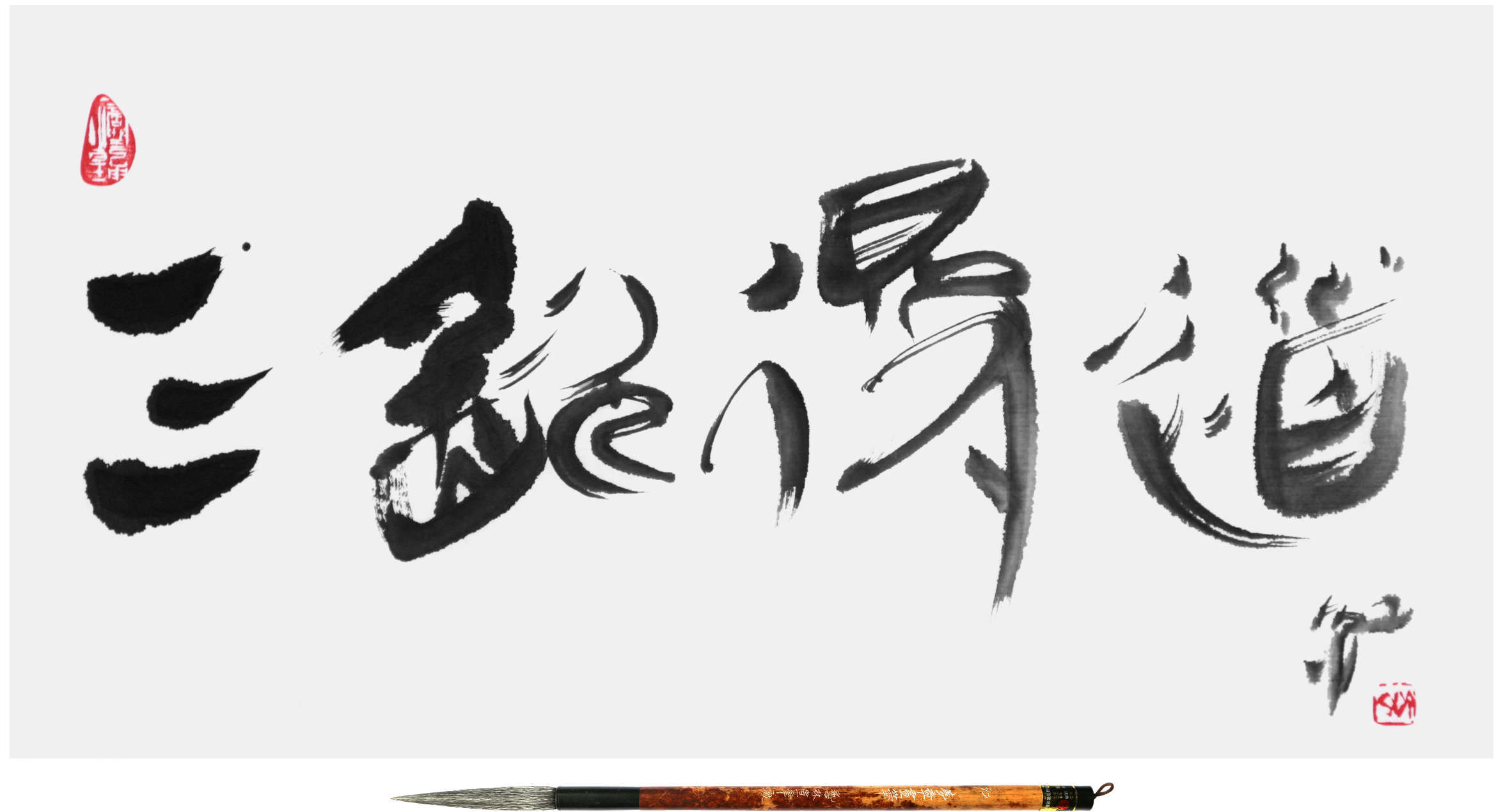 |
The Example of Sai Koh (Qi Hong)’s Freehand Brushwork
Traditional Chinese Painting and Calligraphy on Tea:
|
The Creation Attitude that Respects the Viewer - “Seeking Truth from Facts” in terms of “Borrowing Forms to Create Freehand Works”The objects that can be "borrowed in form" in traditional Chinese painting and calligraphy are limited, including seal script, official script, cursive script and orally described, recorded or actual objects. The deliberately fabricated Chinese characters or objects that "borrows form in a deliberately misrepresenting way" not only obliterate language universality and record reproduction practicality of the traditional Chinese calligraphy art but also disrespect the viewer and the art. |
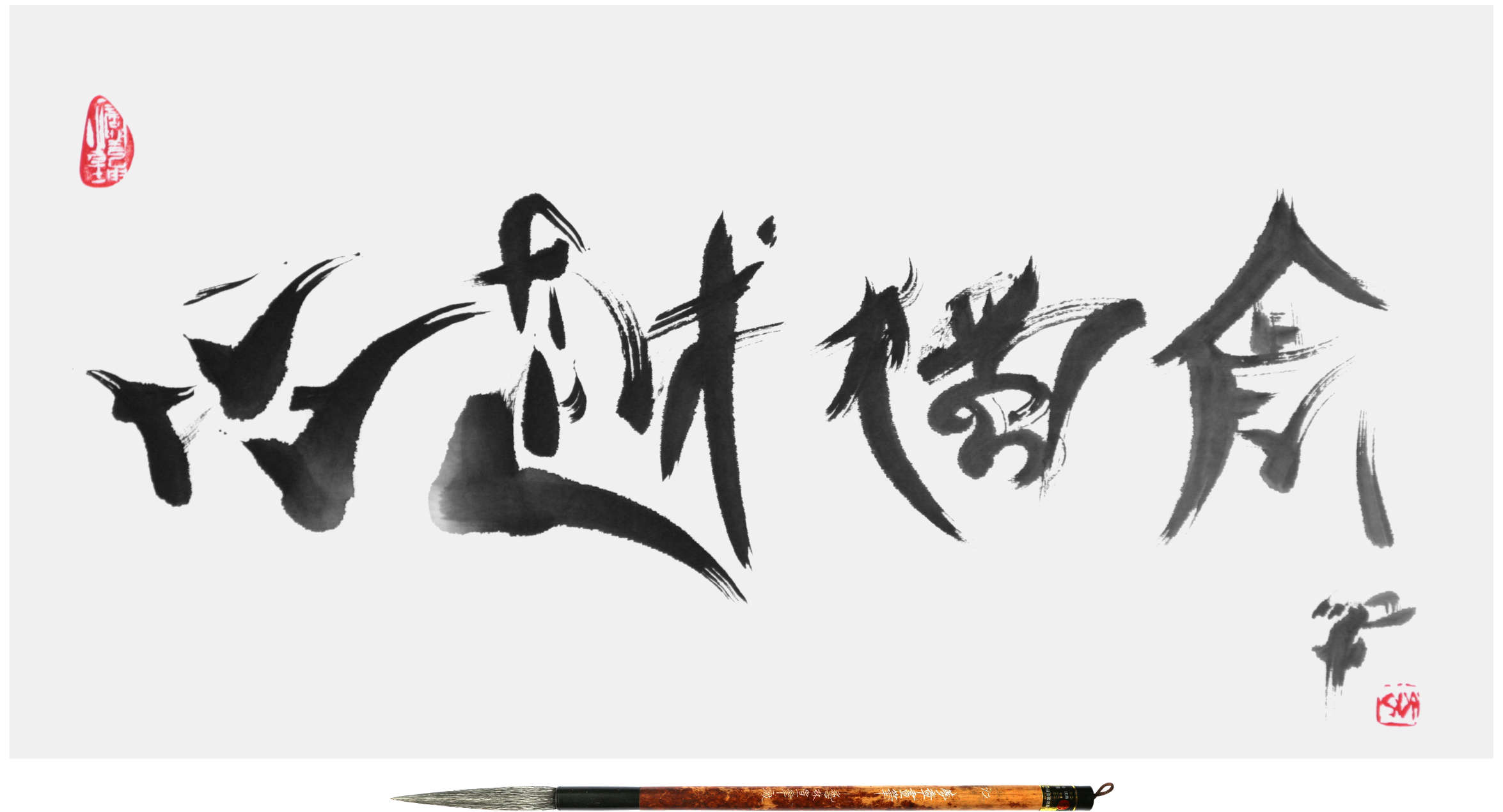 |
| 1 |
The Example of Sai Koh (Qi Hong)’s Freehand Brushwork
Traditional Chinese Painting and Calligraphy on Tea:
|
Fingerprint Personality Style of Creation - “The Same Living Person” in “Borrowing Forms to Create Freehand Works”The themes that can be "borrowed" in traditional Chinese painting and calligraphy are limited, including Chinese characters such as seal characters, official characters and cursive characters as well as objects such as figures, landscapes, flowers and birds and boundary paintings. Whether the author can have a fingerprint style with an independent personality depends on whether the author can maintain the same fingerprint style in the "borrowing forms" of multiple subjects and various forms and whether the author can still hold the same fingerprint style while pursuing infinite changes in the same subject, that is, whether the author can show the endless improvement in the pursuit of people-orientedness while "seeking differences while reserving the same" in maintaining the same fingerprint style. Traditional Chinese painting and calligraphy are people-oriented arts of expression, and their creative style is also naturally reflected in "the integration of the author's individual intention and expression into the painting and calligraphy works" by constantly pursuing continuous improvement in the unity of personality. The independent personality of their fingerprint style should first show that the author is the "same person", rather than being someone else or a "different person" cooperating with multiple people due to different themes, different sizes and other forms; at the same time, the work should show that the author is "the same living person" rather than a "robot" that has no age accumulation, doesn't reflect the physical and mental state at the time of creation and cannot pursue progress. |
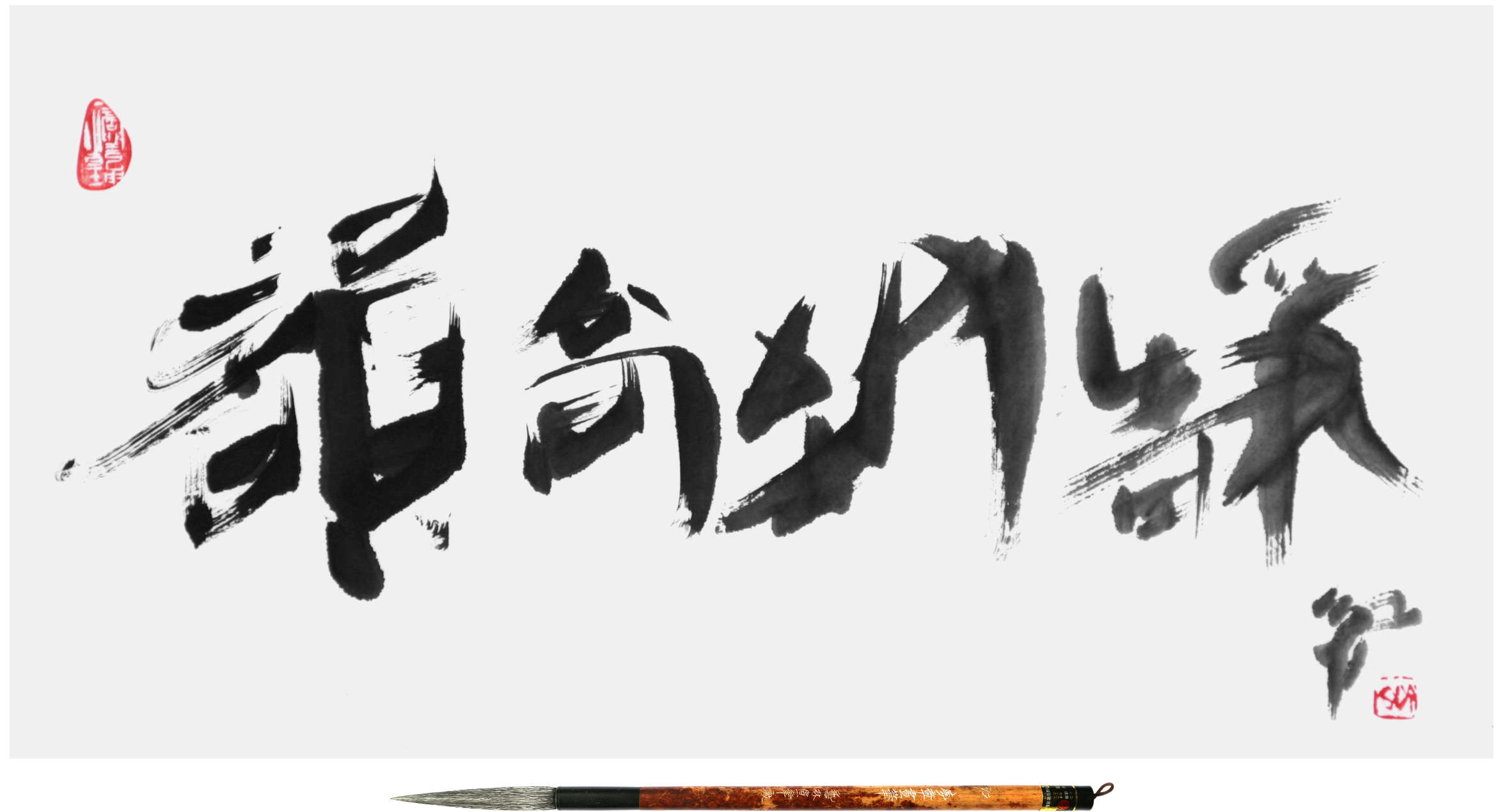 |
The Example of Sai Koh (Qi Hong)’s Freehand Brushwork
Traditional Chinese Painting and Calligraphy on Tea:
|
Initiation of Fingerprint-style Transformation of Freehand Brushwork - The Largest Expression Space for the Individual Aesthetic PursuitTraditional Chinese painting and calligraphy are people-oriented literary arts. The overall image from the "transformation of freehand brushwork" of calligraphic Chinese characters and objects is the form of its final expression. However, the uninventability of Chinese characters and objects with both commonality and reproducibility, the social common rational beauty of traditional Chinese aesthetic culture and the excellence of the common works of predecessors bred by a long history determine that the inheritance of the generality of traditional freehand brushwork is the core part of the traditional Chinese painting and calligraphy creation. Whether the painting and calligraphy work belongs to "traditional Chinese painting and calligraphy" or "other forms of fine art" is the communication result between the viewer’s vision and the generality and diversity of the work itself. Therefore, it can be said that how to keep up with the times and amplify individual preferences in understanding and inheriting the excellence of traditional generality and how to develop a diversified and individualized "initiation of fingerprint-style transformation of freehand brushwork" are the largest expression space that can be used in “the integration of the author's individual intention and expression into the painting and calligraphy works” in the traditional Chinese painting and calligraphy art. |
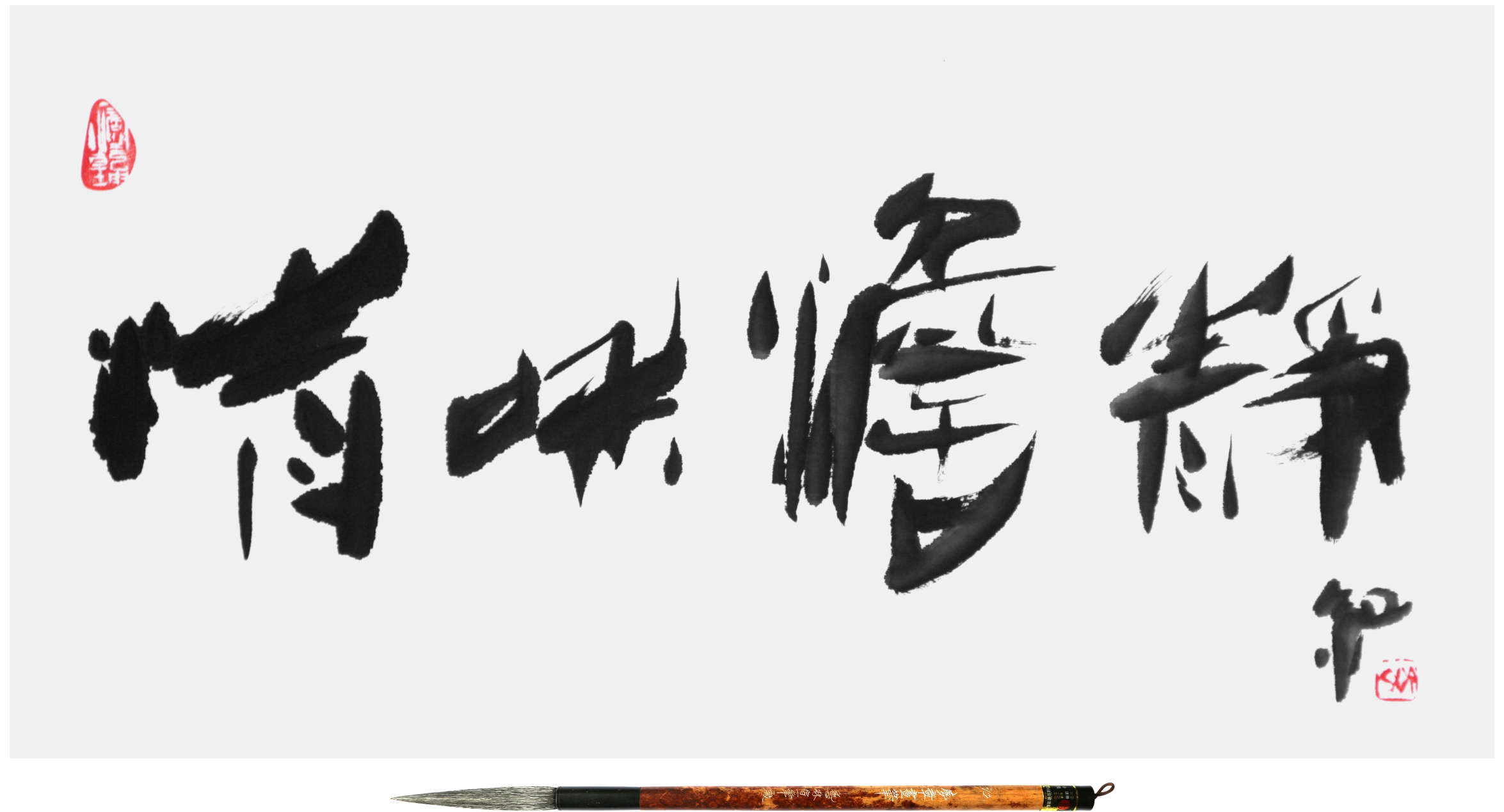 |
The Example of Sai Koh (Qi Hong)’s Freehand Brushwork
Traditional Chinese Painting and Calligraphy on Tea:
|
The Basic Conditions for Transformation of Freehand Brushwork - “Sticking to the Topic” in terms of “Expressiveness in Freehand Brushwork”“Sticking to the topic” is the most basic condition for creation. |
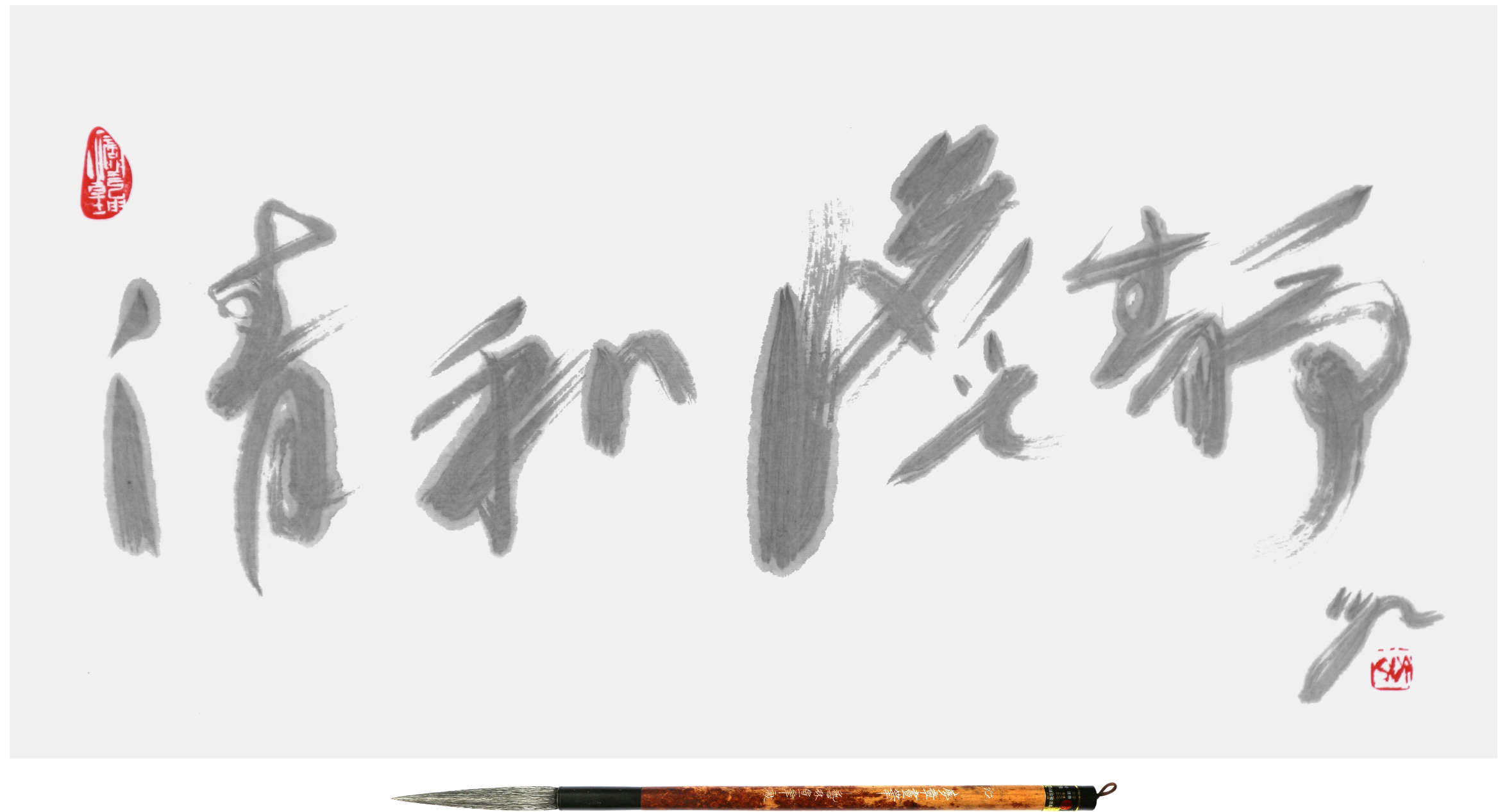 |
The Example of Sai Koh (Qi Hong)’s Freehand Brushwork
Traditional Chinese Painting and Calligraphy on Tea:
|
Consistency of Mind and Body in Transformation of Freehand Brushwork -"Integration of the Author's Individual Intention and Expression into the Painting and Calligraphy Works" in terms of "Vividness in Form and Spirit"Traditional Chinese painting and calligraphy not only record and reproduce Chinese characters and real objects but also are a manifestation of placing the author's mood and mind in the image of the painting and calligraphy. The modeling image of traditional Chinese painting and calligraphy can be said to be consistent with the author’s physical and mental state. As "the author's original state transformed by freehand brushwork", it features "integration of the author's individual intention and expression into the painting and calligraphy works" and "vividness in form and spirit". |
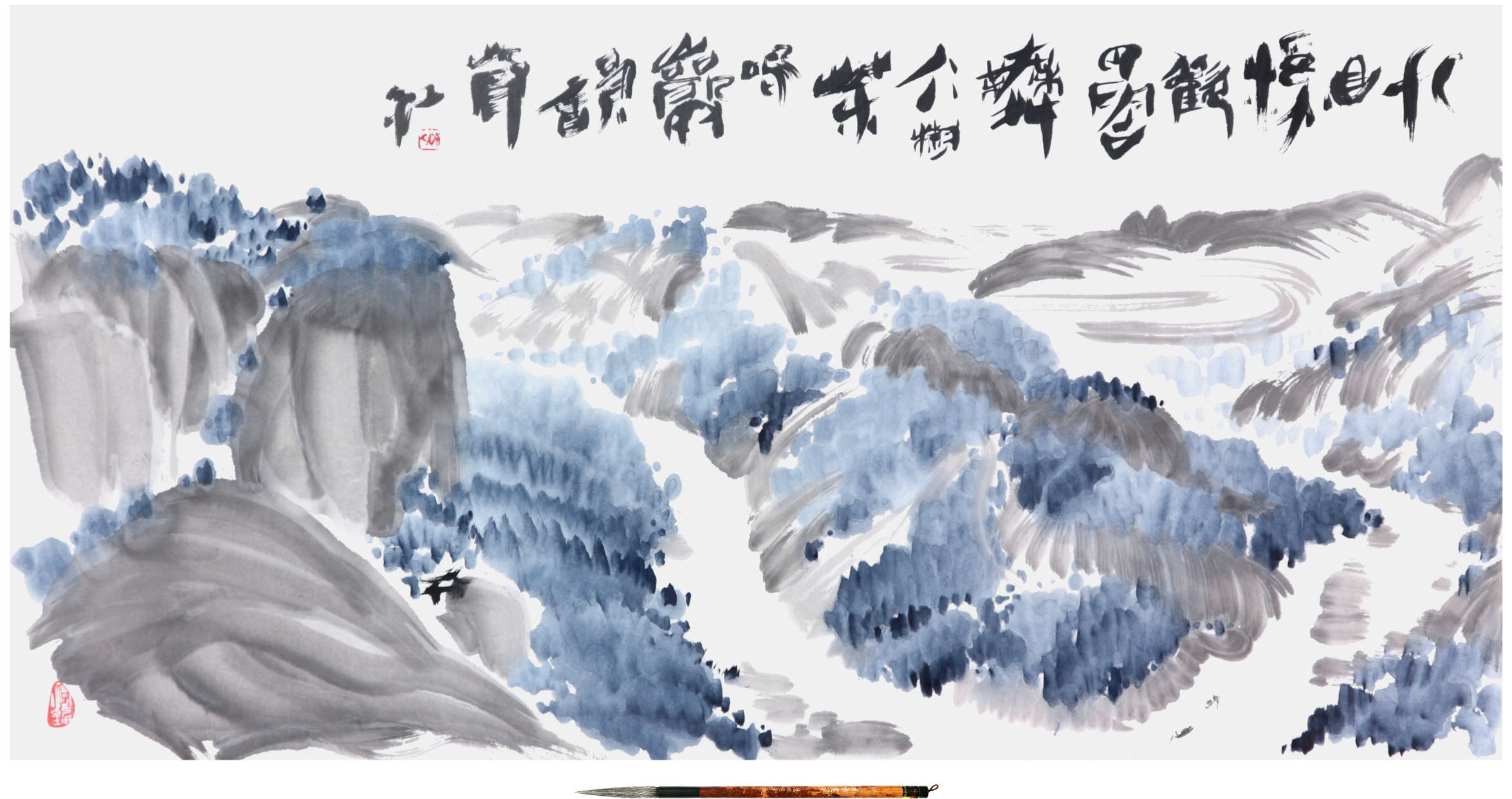 |
The Example of Sai Koh (Qi Hong)’s Freehand Brushwork
Traditional Chinese Painting and Calligraphy on Tea:
|
Consistency of Mind and Body Transformed by Freehand Brushwork - “ Vivifying the Image by the Mastery of the Use of Water” in terms of "Vividness in Form and Spirit"The basic carrier of traditional Chinese painting and calligraphy is "water". Its unique outstanding feature lies in the possibility of clearly and completely recording and reproducing the author's physical and mental changes during static and interval time. (For details, see My Writing - "The Innate Excellent Carrier of Traditional Chinese Painting and Calligraphy Art - Water") Shuxuan (literally "Treated Rice Paper") is permeable without divergence. Although the track of the writing brush is clear, the stillness and intervals are not clear on Shuxuan. Leather paper has divergence but its permeability is not obvious, and the track of the writing brush can’t be fixed but confused and overlapped. Shengxuan (literally "Untreated Rice Paper") made of cotton material is excellent in continuous penetration and divergence. It can clearly and completely record and reproduce the author’s physical and mental state that changes instantly. Being excellent in control of water includes having a full knowledge of the properties of water, using sufficient water, drawing water, anticipating the moving direction of water, driving water, waiting water and squeezing water. Water has suitable permeability and dynamic divergence. To make full use of water includes using enough water, drawing water in a clear order and predicting the active direction and boundary of water in order to drive water. The author also has to wait, squeeze or drive water that is still permeating and dispersing. Use of water is a kind of transformation that integrates the author’s body and mind with water. Being excellent in using water can record and reproduce the changes of the author's physical and mental state vividly, completely and with "high resolution", including the sequence of creation, tempo, ups and downs, contraction and release, disconnection and connection, diversion and overlapping of brush strokes. |
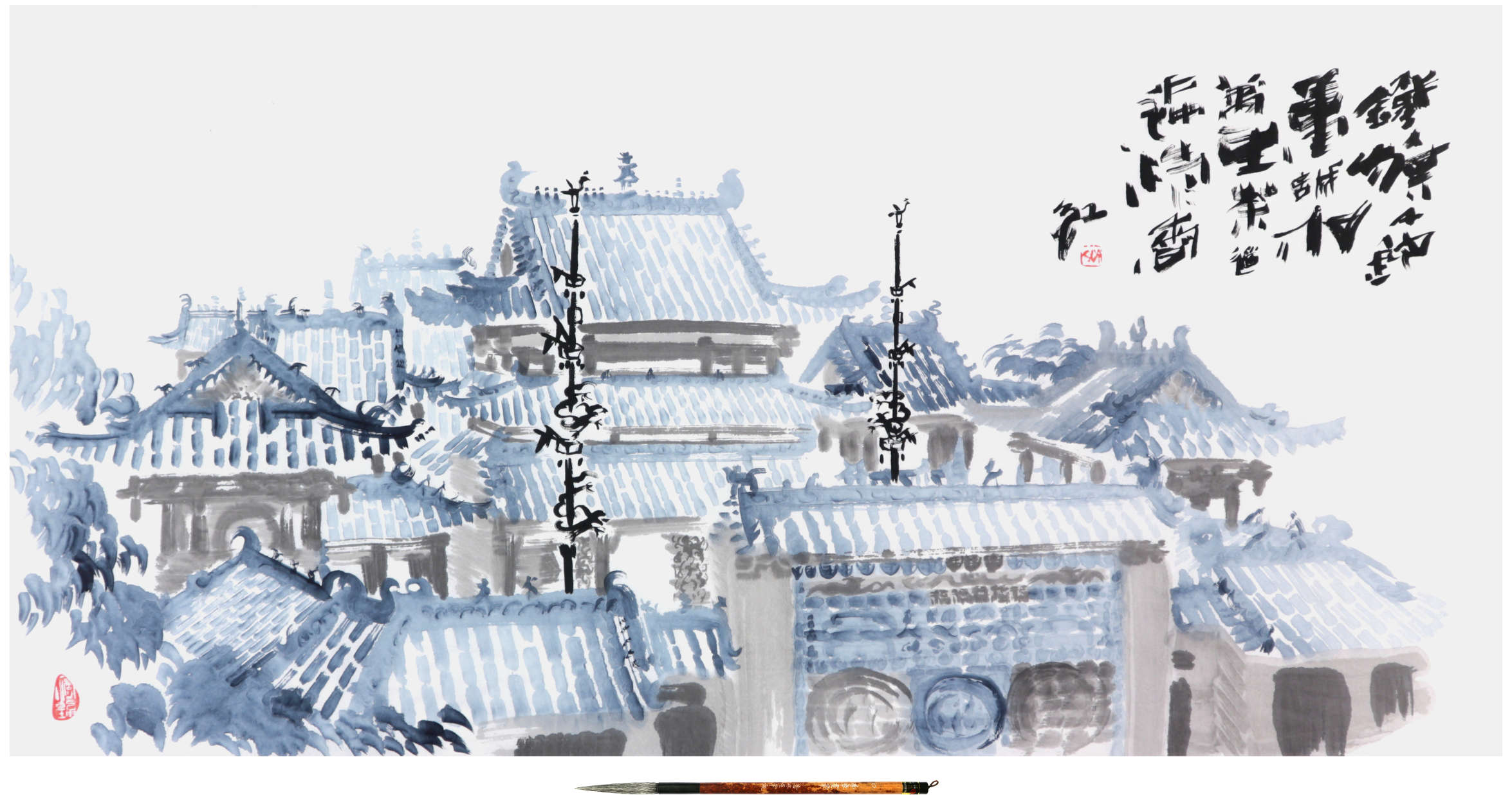 |
The Example of Sai Koh (Qi Hong)’s Freehand Brushwork
Traditional Chinese Painting and Calligraphy on Tea:
|
The Image Unification through Transformation of Freehand Brushwork—"Writing Brush and Ink" in terms of "Strokes Consistency"The best of the unique techniques of traditional Chinese painting and calligraphy lies in the "writing brush and ink" based on the handwritten lines of Chinese characters, which is consistent with traditional Chinese aesthetics and can reflect the change of the individualized physical and mental state of the author at the moment of writing that "integrates the author's individual intention and expression into the painting and calligraphy works". The author's painting and calligraphy creation reached the end with the end of his life. The innate excellence of traditional Chinese painting and calligraphy is that its "writing brush and ink" can be synchronized with "life connotation" and that the infinite possibility of its "future life" creation end cannot be predicted. Not specializing in "writing brush and ink" can be said to be tantamount to limiting the development space for expressing "the integration of the author's individual intention and expression into the painting and calligraphy works", and the end of its creation is predictable: It only has the beauty of visual colors and patterns and only modifies colors or replaces the objects in the stereotyped skills and processes. The image modeled by "writing brush and ink" has the basic conditions of "traditional Chinese calligraphy" and "traditional Chinese painting" that "integrates the author's individual intention and expression into the painting and calligraphy works". However, for other images using no "writing brush and ink", even if its conception or subject matter is Chinese style, it is only "painting and calligraphy" rather than "traditional Chinese painting and calligraphy". "Writing brush and ink" is the basic technique of traditional Chinese painting and calligraphy featuring "the integration of the author's individual intention and expression into the painting and calligraphy works". If we don't work hard on "writing brush and ink", we should not be qualified to talk about the inheritance and promotion of traditional Chinese painting and calligraphy. |
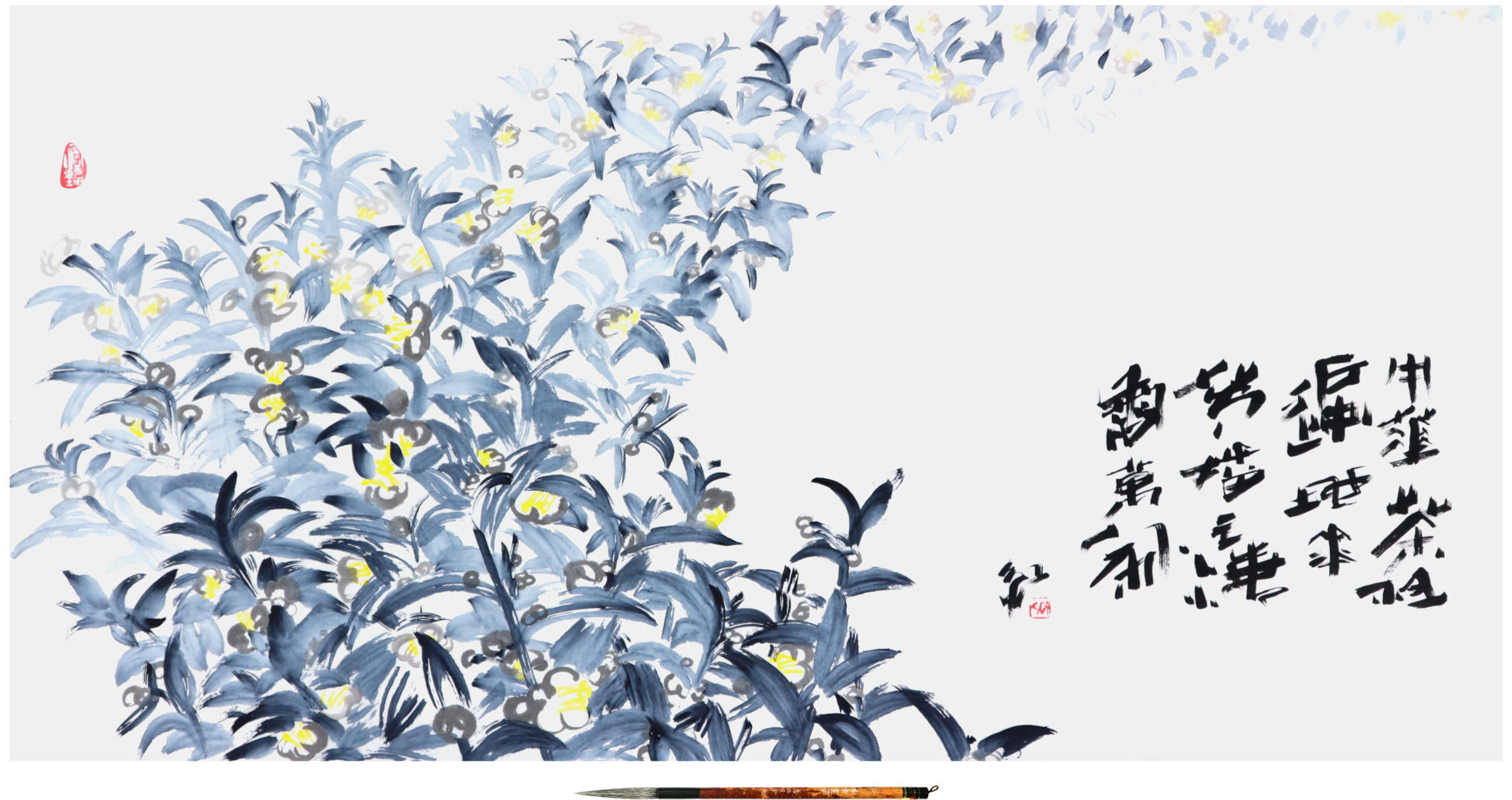 |
The Example of Sai Koh (Qi Hong)’s Freehand Brushwork
Traditional Chinese Painting and Calligraphy on Tea:
|
The Image Unification through Transformation of Freehand Brushwork —"Generality and Diversity of Writing Brush and Ink” in terms of "Strokes Consistency"Traditional Chinese painting and calligraphy are the images that "integrate the author's individual intention and expression into the painting and calligraphy works" written on the basis of brush movement skills that draw the lines of Chinese characters with ink. The general theory of brush movement in traditional Chinese calligraphy includes male's holding writing brush with the right hand, using regular script that is commonly used in modern society, writing a single character from left to right and from top to bottom with the right hand, and connecting multiple characters from top to bottom to avoid the visual obstruction caused by the palm or wrist, following the writing principle of "convenience and smoothness", using natural fall force to save energy, writing with squint in a downward-forward direction different from the viewing line of sight, using a fixed horizontal plane as the creative plane to maximize the water permeability and divergence. With the development of society, such a general theory of brush movement calligraphy centered on "the principle of the male's convenient writing with the right hand in a vertical way" is naturally separated from the practicality and aesthetics of modern society. First of all, in modern Chinese society, men and women are equal, and it is natural that a general calligraphy theory with feminine characteristics appears. In addition, Chinese characters in daily life of modern China are mainly arranged horizontally, and the traditional vertical gesture articulation between Chinese characters has lost its practicality; also, the left-hander will not be forced to use the right hand; the number of handwritten Chinese characters needed for daily use is decreasing; it can be seen that the changes in aesthetics and brush movement skills are also an epochal manifestation of social development. Furthermore, theoretically speaking, objective works are created by the author with the help of speculation and hypothesis to lead the direction of practice and on the basis of summarizing the regularity of practical verification. So to speak, it is commendable for the author to elevate the experience of diversity to a general theory that dominates the practice. Meanwhile, the existence of creation diversity cannot be denied by anyone. From the perspective of the brush movement of Chinese characters, its general theory leans towards the humanities rather than the mathematical rule that one plus one can only equal two. The writer's own theory can be regarded as the real one that dominates his own skills and has his personal preference. Speculations made by viewers on the writer’s actual works, even if they are verified by practice, are at best a verified preference theory rather than the author's true theory. We often hear that "No one can surpass A in calligraphy", which is real nonsense. "A’s calligraphy" is completed under the guidance of A’s own preference theory. Without changing A's preference theory, it is obviously impossible for B, C and D with different personalities to surpass A with A's preference theory. Conversely, the individual styles of B, C and D are absolutely possible to be juxtaposed with that of A. In other words, there must be diversified spaces for general theories. Otherwise, there cannot be works of different styles in the history of Chinese calligraphy, such as the plain style of the Shang Dynasty, the serious style of the Zhou Dynasty, the majestic style of the Qin Dynasty, the gorgeous style of the Han Dynasty, the charming style of the Jin Dynasty, the elegant Style of the Southern Dynasties, the robust style of the Northern Dynasties, the orderly style of the Sui Dynasty, the law-advocating style of the Tang Dynasty, the artistic conception-oriented style of the Song Dynasty, the form-oriented style of the Yuan Dynasty and the Ming Dynasty and the academic style of the Qing Dynasty. Specifically, the physical basis of the general theory about the brush movement of Chinese characters is available in the authentic calligraphy works that we can see with our own eyes: The scripts of Chinese characters evolved in the order of seal script, clerical script, cursive script, running script and regular script. The bronze inscription or the seal character existing before the clerical script can only be seen in the newly unearthed few allied oaths or bamboo slips. For the classic scripts before the Sui and Tang Dynasties, we can almost only refer to the engraved objects or their rubbings or even the copied versions of others. In particular, as the main object of the general theory of calligraphy, the original handwriting which serves as the main basis for the formation of Regular Script should be Dunhuang Manuscripts, which remained undiscovered until the end of the Qing Dynasty. So to speak, brush writing has produced all the characteristics of calligraphy brush and ink art. The evolution of Chinese characters has made the lines of Chinese characters more diversified and the writing methods more complicated. Through individual observation of traditional or historical objects and by comparison, analysis, exploration and experimentation of existing preferential theories, it is possible to find spaces that can magnify and enrich individual preferences. |
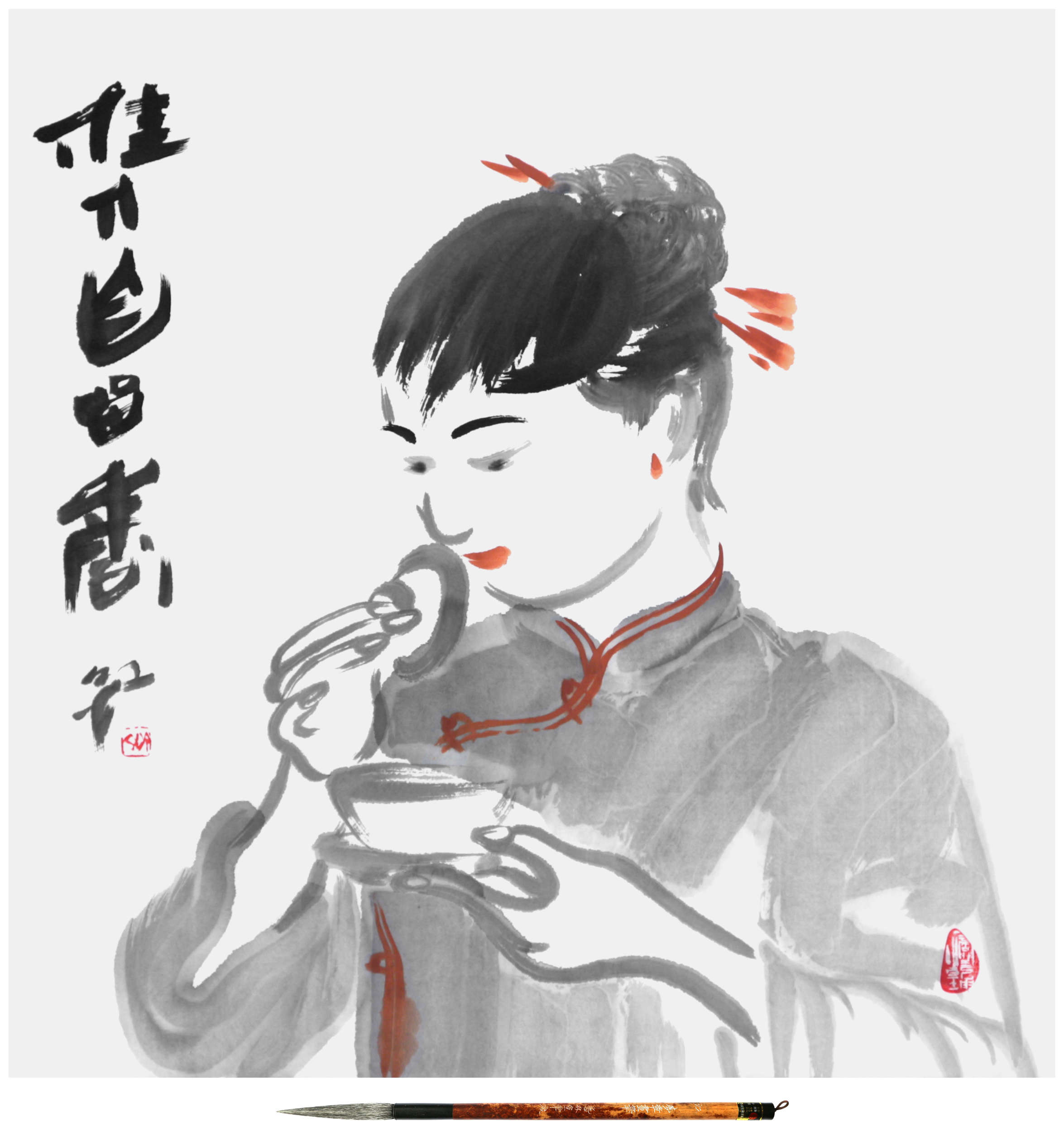 |
The Example of Sai Koh (Qi Hong)’s Freehand Brushwork
Traditional Chinese Painting and Calligraphy on Tea:
|
The Image Unification through Transformation of Freehand Brushwork —"Fingerprint-style Abundance of Brush and Ink” in terms of "Strokes Consistency"Goat Hair Long Head Brush: The long head of such a writing brush enables us to use the brush tip, brush belly and brush heel. If the brush carries more ink, we can continue to use the brush for a longer period. The brush waist enables us to adjust the brush strength freely. The softness of brush hair leads to endless variations of brushstrokes. Goat Hair Long Head Brush can be said to be the first choice for writers to exhibit integrated transformation and unlimited variations. The abandunt changes in brushstroke techniques can be said to be in direct proportion to the amplitude of variation in the motion curve of the brush crown (the top of the brush tube on which a lanyard is hung). The writing convenience of the brush can enrich the modeling. In addition, for example: Yin Hand (Slanted-tip with the right hand: palm up, brush tip to the left and brush crown to the right) → Yang Hand ( Slanted-tip with the right hand:palm down, brush tip to the right and brush crown to the left); Sanfenbi →from brush waist to brush heel; regular way→reverse way; to fix the brush tube→to rotate the brush tube; Once-time employment of both Yin hand and Yang Hand to achieve pause fold at the same direction→shift between Yin hand and Yang hand to change the direction for pause fold. All of them are rich examples of individualized brush movement techniques. The brush and ink of traditional Chinese painting and calligraphy not only aim to pursue visual images but also are used to complete a natural transformation from the artist’s physical and mental state to the image of painting and calligraphy through the way of writing. It can be seen that depictive overlapping and repeative mending can be said to be concrete manifestations of immature brushstroke and unstable mental and physical state. |
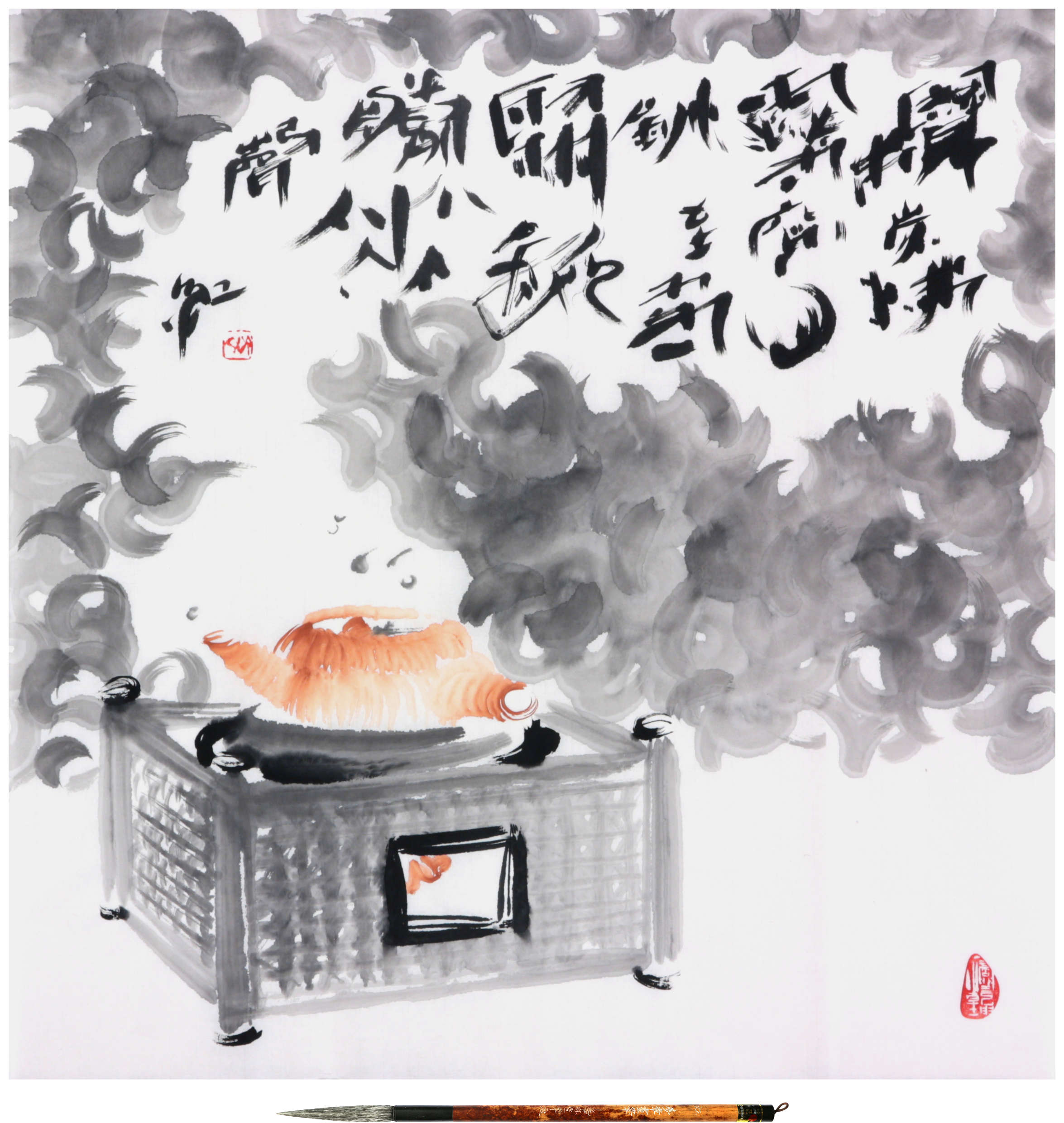 |
The Example of Sai Koh (Qi Hong)’s Freehand Brushwork
Traditional Chinese Painting and Calligraphy on Tea:
|
The Image Unification through Transformation of Freehand Brushwork -“One Stroke to the End”in terms of "Strokes Consistency"Talk about “Food is the Paramount Necessity of the People” Speaking of "strokes consistency", it was really something that had confused me for a long time when I was young. At that time when I watched Master Qi Baishi’s works, I didn’t understand why the freehand brushwork like bird-and-flower painting and the meticulous brushwork like grass-and-insect painting can coexist in view of their different techniques; what's more, what Master Qi Baishi pursued should be that "The beauty lies between similarity and dissimilarity"; why would he paradoxically create meticulous brushwork such as grass-and-insect that he dislikes and calls it "excessive similarity becomes vulgar"? Until I accidentally came across the term "Food is the paramount necessity of the people", I suddenly realized that people's pursuit of art as well as people's material needs are sequential. The traditional Chinese painting and calligraphy art is not a mechanical assembly of Chinese character parts and real object parts but an inseparable vivid overall image transformed by freehand brushwork with a clear sequence of painting or writing through a clean mind and body that enables the penetration of vividness beyond the static plane. Its unification means comes from the unique technique of traditional Chinese painting and calligraphy - the "writing brush and ink" that "integrate the author's individual intention and expression into the painting and calligraphy works", which can best express the instant individualized physical and mental state of the author and is also the largest technical fingerprint style space that can be used in individual creation. The dominant technique idea for unifying the overall image of brush and ink is that "Overall transformation precedes local form skills". Just as they are useless if head, body and feet are in good condition but don't belong to the same person, the partial isolative perfection can only be an imperfection for a whole. The real perfection of the part lies in the perfect contribution of parts to the whole. The key point of overall transformation is "strokes consistency"; the key is to master the technique of "One stroke to the end", i.e., "the spirit of the painting is fixed after the brush tip contacts rice paper" while "although dots or strokes are structurally disjointed, the gestures are still continuous"; “consistency of brushstrokes” is also the "continuity of the ink color without disjoining Qi" represented by the visual image, which means that "stroke and Qi are linked together" that expresses the original state of "integrating the author's individual intention and expression into the painting and calligraphy works", that is, the natural unity of clarity, cleanness and breathability. Isolative change of brushes in parts of the work, namely, partial replacement of different types or sizes of brushes; partial replacement of different styles of brushstroke techniques; separation of the physical and mental state and the overall state at the use of the brush, etc. The dominant thought can be said to be "only for the beauty of local modeling technique" that focuses on the part. |
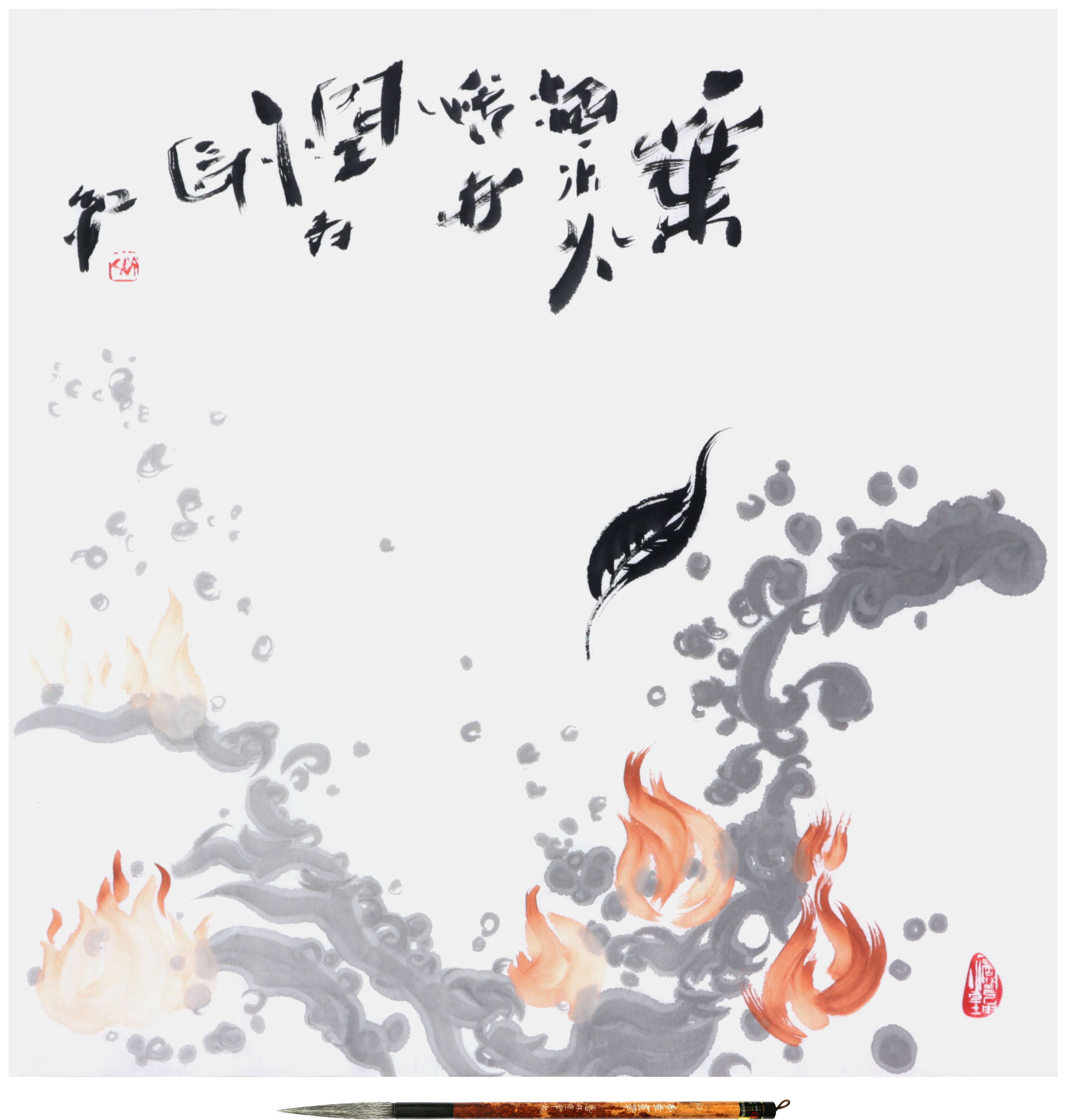 |
The Example of Sai Koh (Qi Hong)’s Freehand Brushwork
Traditional Chinese Painting and Calligraphy on Tea:
|
|
Throw Away a Brick in order to Get a Gem Nowadays, we often hear a confusing saying that "someone’s calligraphy and painting are a collection or fusion of the strengths of a hundred schools". If the individual style of a calligraphy or painting work is compared to the taste characteristics of a dish, the “all tastes” that combine sourness, sweetness, bitterness, spiciness and saltiness should be equivalent to “tastelessness” without characteristics. It can be said that individualization embodies a unity of individuality with changes in age rather than a fragment of a hundred characteristics that can be changed at will. It is impossible to create fingerprint-style works without the dominance of individualization theory. The creation of traditional Chinese painting and calligraphy is not an amazing thing that appears out of nowhere but an outcome from the exploration, experimentation and perfection of the diversified personality that "integrates the author's individual intention and expression into the painting and calligraphy works". Its leading thought can be said to be "the integration of the author's individual intention and expression into the painting and calligraphy works"; the inherited "initiation of fingerprint-style transformation of freehand brushwork" is the largest available space for expressing individual style; "borrowing forms to create freehand works, strokes consistency, vividness in form and spirit, and expressiveness in freehand brushwork" can be said to be its basic tips. "Creation" is a word frequently used in current society, and there should be room for further confirmation of the actual meaning that it expresses. Mathematically speaking, if an artist completes one painting every day and continues to do that during his 50-year art career, if the number of days per year is calculated as 365 days, he has created a total of 18,250 works in his lifetime; if he creates one painting per 10 days, the total is 1825 in his lifetime; if he creates 1 picture per 100 days, then 183 pictures in a lifetime; if only one painting is created in a lifetime... Since the number of common works is essentially different from that of excellent creations, you can also have a clear understanding of the difficulty of creation. If creation is likened to "original mold that cannot or can be disassembled" and works are likened to "original mold product or assembly product or part product of original disassembled mold", it is normal that the number of works exceeds the number of creations. After all, these works are made at least with"original mold". However, when the "mold" is a detachable mold that is copied from others, when one person turns into a multi-person assembly line, the nature of the finished product can be said to be closer to "cottage products or copy-assembled products made of different cottage parts" in mass production. Although the evaluation of the market value of the product follows its own market rules, my humble opinion is that the "number" of "integrating the author's individual intention and expression into the painting and calligraphy works" is different between the "original product" with fingerprint style and the mass-produced cottage products with the advantage of assembling the strength of hundreds of schools. Although creation is a difficult process that requires repeated learning and comprehension, repeated analysis and summary, repeated racking of one's brains, and repeated comparison and attempts, the founding is also the basic process that nurtures art and culture. The inheritance and development of excellent traditional Chinese painting and calligraphy are inseparable from the fundamental link called creation.
|
| View 2 View 4 |
 |
| Copyright (C) Qi Hong (Sai Koh). All Rights Reserved. |